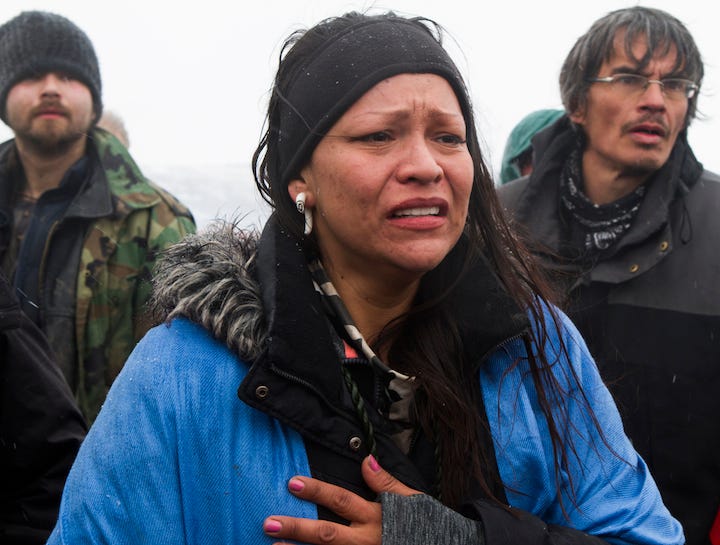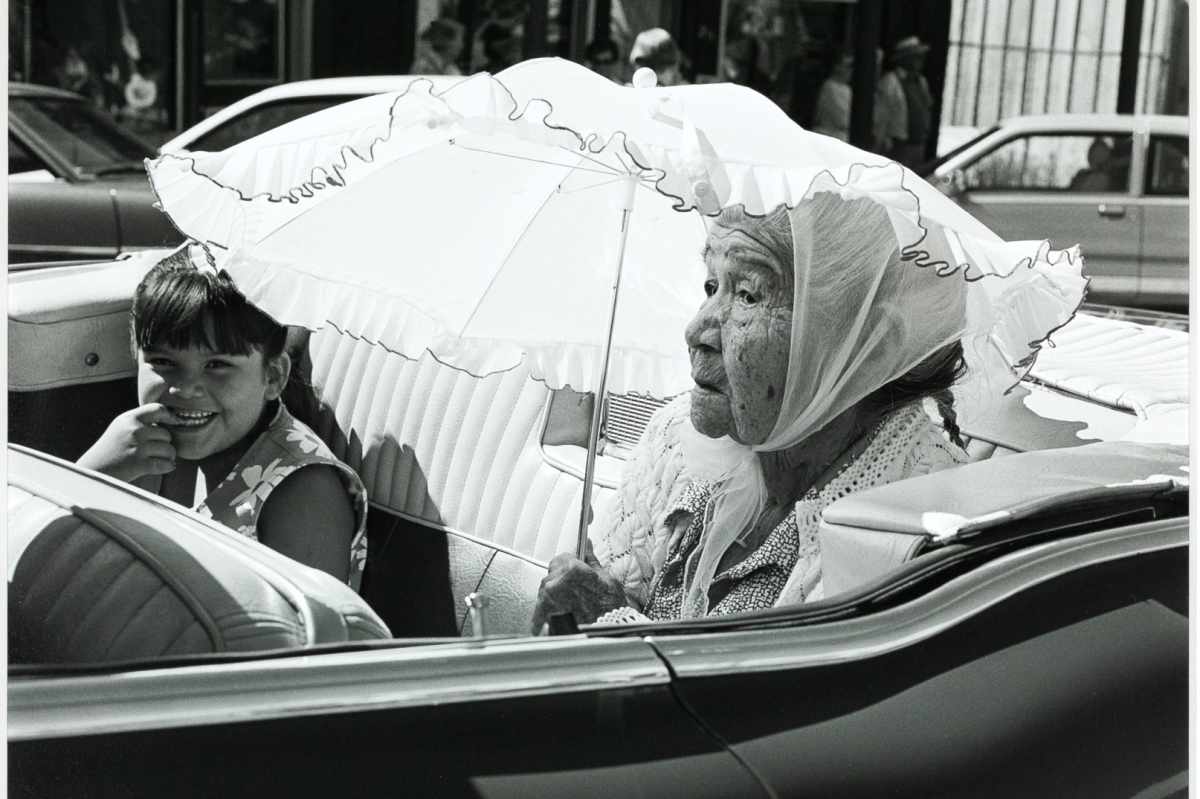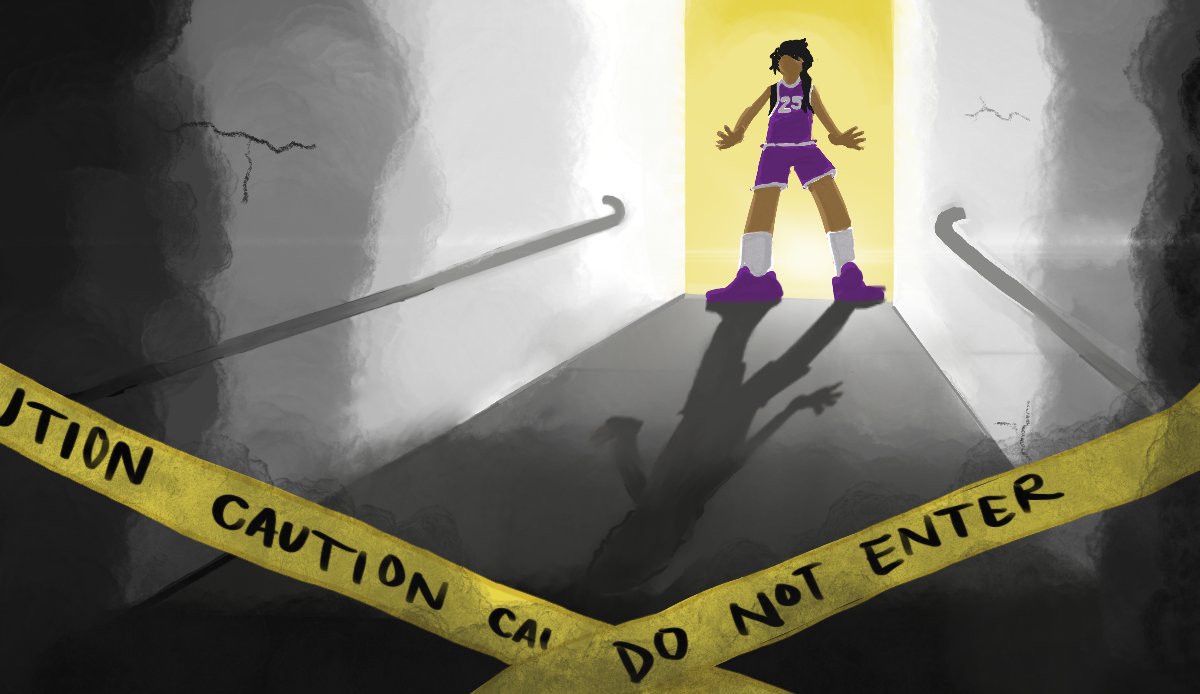by Toni Cervantes

There is an ancient Lakota prophecy that foretells of a black snake that will burrow underground, desecrating sacred burial land and poisoning the lifeblood of the people.
In 2016, the black snake reared its ugly head in the form of the Dakota Access Pipeline (DAPL). To us, it was not a question of if the pipeline will break, it was a question of when it will break, and contaminate the Missouri River, the lifeblood of the Lakota Sioux Tribes.

In September, my 10-week solo-backpacking journey through the heart of the Eastern Sierras came to an end. Within an hour of my descent, I heard Amy Goodman from “Democracy Now” reporting on the brutal dog attacks against unarmed Water Protectors at the Standing Rock Reservation in North Dakota.
As a Native American, I had to go to Standing Rock and document this historic struggle. Indigenous people, who survived 500 years of genocide, were battling the mammoth fossil fuel industry.
I arrived on Oct. 10 — Indigenous People’s Day. The first encampment I passed on Highway 1806 had erected banners, blowing in the wind with messages like “Defend the Sacred,” “Red Nations Rising” and “No DAPL.” The signs warned us that we were entering Indian resistance territory.

Drums pounded and men whooped in the distance. I arrived at Oceti Sakowin (Seven Sacred Fires) Camp and saw teepees painted with animal icons, visions and colorful geometric designs. Riders galloped their horses across the valley as they did 200 years before. Was it a dream? Or had I entered an altered state of consciousness?
Every morning, a call to action was broadcast over a squeaky speaker: “Wake up, my relatives. Greet the morning sun. We have come to protect the water, so get up! We aren’t on vacation here!”
Indigenous tribes from New Zealand to Alaska journeyed to Standing Rock in honor of the uprising. The days burst with prayer, water, pipe, dance, and song rituals that bound our spirits together. These ceremonial experiences fortified the Water Protectors who risked death and arrest at the frontlines.
On Oct. 27, the Morton County Sheriff’s Department and Tiger Swan, a private militia hired by Energy Transfer Partners, raided the North Treaty camp. They urinated and defecated on our survival provisions and turned our world upside down.

On Nov. 20, I ran onto the Backwater Bridge, where Water Protectors were being fired at with water cannons, grenades, and tear gas in a bitterly cold 22-degree night. I captured shots of the lopsided conflict between the militia (who hid behind full riot gear, Humvees, tanks and AR-15s) and the Water Protectors, who had little more than prayer and down jackets to protect them from the hail of rubber bullets that blinded my friend, Sioux Z, in one eye and nearly blew off the arm of Sophia, a fellow Water Protector. I was tear-gassed several times. I feared my lungs would pop and I would drown in my own vomit.

“Mni Wiconi — Water Is Life,” “You can’t drink oil. Leave it in the soil!” were our battle cries.
“It is a good day to die,” was the quiet prayer often heard amidst the chaos, the cannon fire, and the psychological warfare waged against us.
As feared, Trump’s second executive order was to overturn Obama’s decision to deny the permit for construction of the DAPL just days after Trump’s inauguration. An order to evacuate Oceti Sakowin, Sacred Stone, and Rosebud camps quickly followed.

Adrenaline surged through our veins as the Feb. 22, 2017, evacuation deadline approached. A ragtag collection of photojournalists was outfitted in fluorescent green Press vests. Naively, we thought the First Amendment would protect us. We were wrong.
I was arrested along with nine other Water Protectors and photojournalists for “Obstructing a Government Event.” The arresting officers failed to read me my Miranda rights. I was handcuffed for six hours, and thrown into a dog kennel. I was stripped down to stocking feet, leggings, and a long sleeve t-shirt and forced to sit on an ice-cold concrete floor. All of my camera gear was confiscated.
I was transported to Devil’s Lake Correctional Facility. I refused to give the prison guard personal information that was my legal right to withhold.
“Things are going to be a lot tougher for you in here because you are very uncooperative,” she said. “Criminals don’t have rights and if you keep asking you will never get to make a phone call,” she said. And I never did.

People often ask me, “Whatever happened to Standing Rock?” I tell them we were forcibly removed at the point of a gun by the real terrorists — the government. We were refugees on our own land, but we were not defeated.
International banks, labor union pension funds, and cities such as San Francisco, New York, and Seattle are beginning to divest from the fossil fuel industry. Water Protectors continue to stand on the front lines of extraction industry construction sites today.

The beautiful faces and people of Standing Rock are embedded in my heart. I am humbled by the Water Protectors’ audacity against all odds. I am honored to have stood on the front lines with so many brave and peaceful warriors who came in love and prayer to defend the sacred and kill the black snake.
I think to myself, “It’s a good day to die…”
Photos by Toni Cervantes.
Toni Cervantes is a Tower staff writer.

























